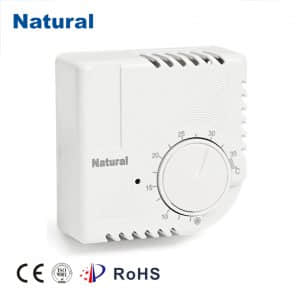In our modern world, where convenience and comfort are paramount, the innovation of adjustable temperature control switches has transformed the way we experience our environments. These intelligent devices have become an integral part of our daily lives, enhancing our comfort, energy efficiency, and overall well-being.

The concept of adjustable temperature control is not a new one, but its evolution over the years has been truly remarkable. From humble beginnings as simple manual thermostats to the cutting-edge smart devices of today, these switches have come a long way. The early iterations of temperature control switches consisted of basic mechanical thermostats. These devices relied on a bimetallic strip that would expand or contract based on temperature fluctuations, triggering the heating or cooling systems to turn on or off. While functional, these manual thermostats lacked precision and required constant human intervention to maintain a comfortable temperature.
As technology advanced, electronic thermostats emerged, allowing for more accurate temperature control. These devices utilized electronic sensors to detect temperature changes and adjust the heating or cooling accordingly. This marked a significant improvement, but it wasn't until the introduction of programmable thermostats that true customization became possible.
Programmable thermostats enabled users to set schedules for temperature adjustments, catering to different comfort preferences throughout the day. For instance, homeowners could program the thermostat to lower the temperature during working hours and raise it before returning home. This innovation not only improved comfort but also contributed to energy savings by avoiding unnecessary heating or cooling when no one was present.
In recent years, the rise of the Internet of Things (IoT) has brought about a new era of temperature control switches: the smart thermostat. These devices take customization and convenience to a whole new level. Connected to the internet, smart thermostats can be controlled remotely through smartphones or voice-activated assistants. This means that whether you're at home or miles away, you have full control over your home's temperature settings.
What truly sets smart thermostats apart is their ability to learn and adapt to your habits. Using advanced algorithms, they can analyze your usage patterns and make automatic adjustments to create the optimal balance between comfort and energy efficiency. For example, if a smart thermostat detects that you prefer a cooler sleeping environment, it will gradually lower the temperature before bedtime.
Furthermore, smart thermostats often come with energy usage insights, allowing users to monitor their consumption and make informed decisions to reduce their carbon footprint. This aligns with the growing global emphasis on sustainability and energy conservation.
In conclusion, the journey from manual thermostats to adjustable temperature control switches has been one of remarkable advancement. These devices have evolved from basic mechanical mechanisms to sophisticated smart devices that provide comfort, convenience, and energy efficiency. As technology continues to progress, we can only anticipate further enhancements in the realm of temperature control, making our lives even more comfortable and our homes more environmentally friendly.
 28 items Patent
28 items Patent
 28 items Patent
28 items Patent
 28 items Patent
28 items Patent

